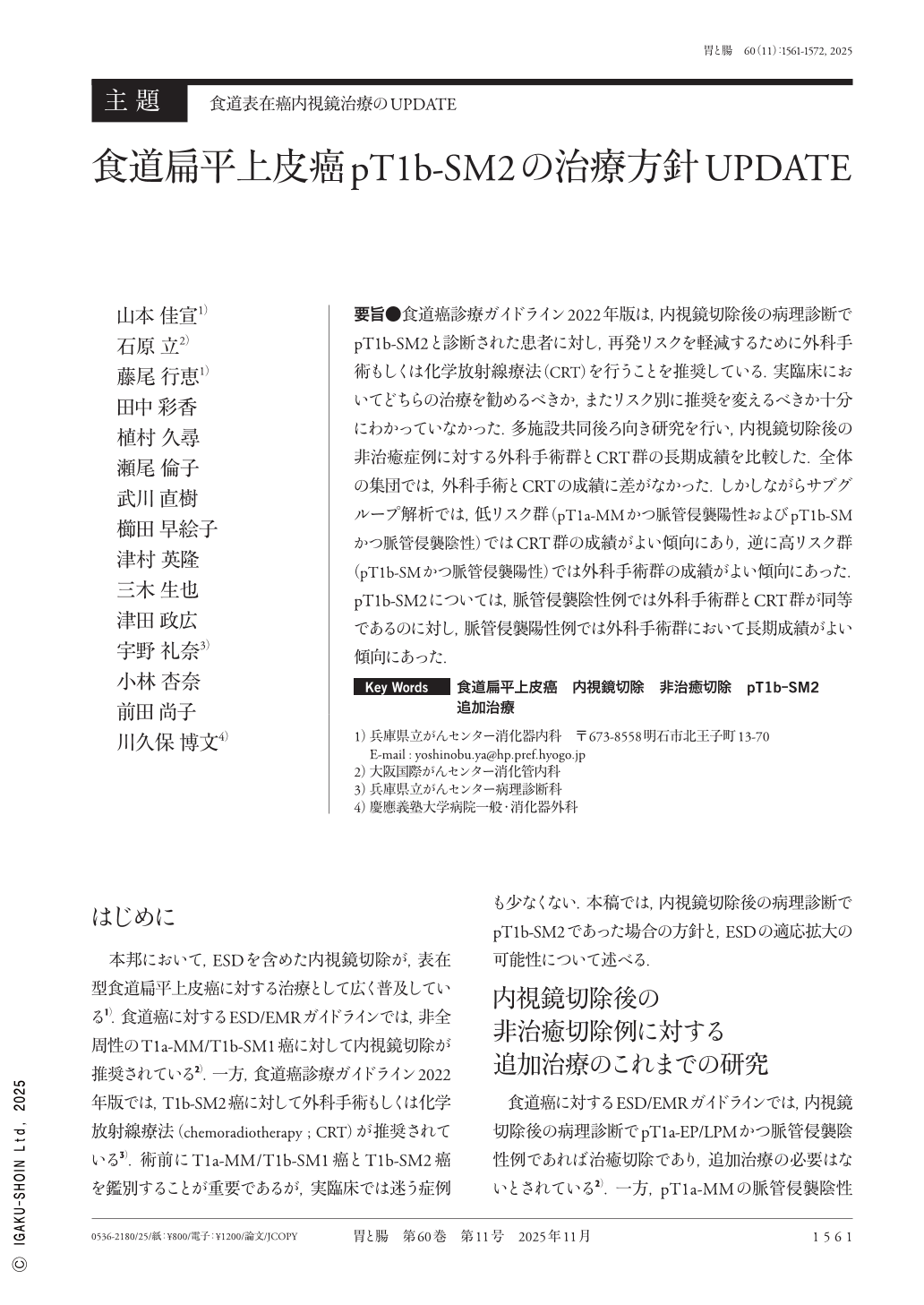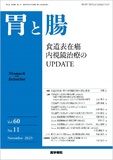Japanese
English
- 有料閲覧
- Abstract 文献概要
- 1ページ目 Look Inside
- 参考文献 Reference
要旨●食道癌診療ガイドライン2022年版は,内視鏡切除後の病理診断でpT1b-SM2と診断された患者に対し,再発リスクを軽減するために外科手術もしくは化学放射線療法(CRT)を行うことを推奨している.実臨床においてどちらの治療を勧めるべきか,またリスク別に推奨を変えるべきか十分にわかっていなかった.多施設共同後ろ向き研究を行い,内視鏡切除後の非治癒症例に対する外科手術群とCRT群の長期成績を比較した.全体の集団では,外科手術とCRTの成績に差がなかった.しかしながらサブグループ解析では,低リスク群(pT1a-MMかつ脈管侵襲陽性およびpT1b-SMかつ脈管侵襲陰性)ではCRT群の成績がよい傾向にあり,逆に高リスク群(pT1b-SMかつ脈管侵襲陽性)では外科手術群の成績がよい傾向にあった.pT1b-SM2については,脈管侵襲陰性例では外科手術群とCRT群が同等であるのに対し,脈管侵襲陽性例では外科手術群において長期成績がよい傾向にあった.
To reduce the risk of recurrence, the current guidelines recommend surgery or chemoradiotherapy(CRT)for patients diagnosed with pT1b-SM2 esophageal squamous cell carcinoma based on the pathological diagnosis after endoscopic resection. However, in clinical practice, the decision between surgery and CRT and the dependence of that decision on risk factors are unclear. A multicenter retrospective study was conducted to compare long-term outcomes between surgery and CRT in patients with noncurative esophageal squamous cell carcinoma after endoscopic resection. No differences in outcomes were detected between surgery and CRT in the overall population. However, subgroup analyses revealed that the low-risk patients(pT1a-MM with lymphovascular invasion and pT1b-SM without lymphovascular invasion)tended to have better outcomes after CRT. Conversely, in the high-risk group(pT1b-SM with lymphovascular invasion), patients who underwent surgery tended to have better outcomes. For patients with pT1b-SM2 without lymphovascular invasion, the outcomes of surgery and CRT groups were equivalent ; however, in cases with lymphovascular invasion, the surgery group tended to have better long-term outcomes.

Copyright © 2025, Igaku-Shoin Ltd. All rights reserved.


